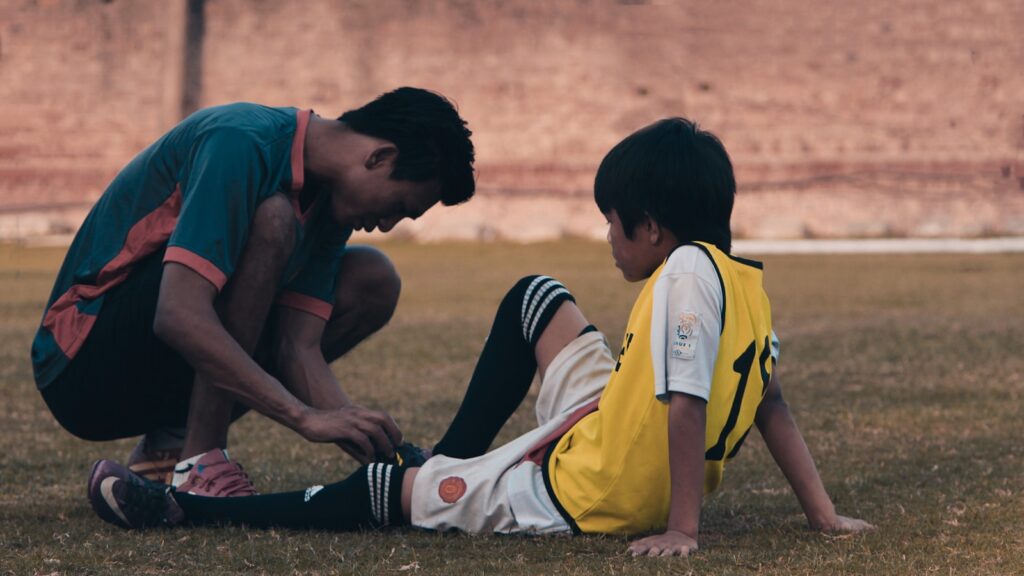Your body is a remarkable machine. It may seem like it’s made up of bones, ligaments, and muscle—but it’s the soft tissue beneath it all that keeps you moving, flexing, and functioning. And when that soft tissue takes a hit? Oh, you’ll feel it.
From sports injuries to daily overuse, soft tissue injuries can disrupt your routine, your mood, and even your ability to work. But what exactly are they—and what should you do if you think you’ve got one?
What Is A Soft Tissue Injury?

Soft tissue injuries refer to damage affecting muscles, ligaments, or tendons—the stretchy structures responsible for movement and support.
These injuries don’t involve broken bones but can be just as painful and limiting. They’re often caused by:
- Overuse during repetitive workouts
- Sudden twists or awkward movements
- Impact injuries (e.g. car crashes or falls)
- Poor technique or lack of warm-up in sport
The most common soft tissue injuries include Achilles tendon tears, hamstring strains, rotator cuff injuries, and wrist sprains. People often take legal action after a crash because of damage to the soft tissue in their bodies. Exercise, however, is the main culprit.
RELATED READ: How to Build a Health Routine That Actually Sticks

Sprains vs Strains: What’s the Difference?
You’ve probably heard people use the terms interchangeably—but medically speaking, sprains and strains are different.
| Term | Affects | Description |
|---|---|---|
| Strain | Tendons or muscles | Caused by overstretching or tearing tissue connecting muscle to bone |
| Sprain | Ligaments | Involves overstretching or tearing the tissue that connects bones together |
Both injuries are graded by severity:
- Grade 1 (Mild): Some pain, swelling, and slight tissue damage. You’ll feel discomfort but can often keep moving.
- Grade 2 (Moderate): Partial tears. The affected area may experience swelling, bruising, pain during movement, and weakness.
- Grade 3 (Severe): Complete tear or rupture. You may not be able to bear weight, move the area, or perform normal activities without pain.
How Do You Know If It’s a Soft Tissue Injury?
Common symptoms include:
- Swelling and inflammation near the joint or muscle
- Bruising or discolouration
- Sharp or dull pain that worsens with movement
- Stiffness or weakness
- Reduced range of motion
If you experience any of the above after exercise, a fall, or a knock, it’s best to assume a soft tissue injury until diagnosed properly by a medical professional.
TIP: Don’t push through the pain. It could turn a mild injury into a long-term issue.

Treatment: What Should You Do First?
The golden rule? RICE:
- Rest the affected area
- Ice it for 15–20 minutes every few hours (not directly on skin)
- Compress with a bandage
- Elevate the injury above heart level
In more serious cases, your doctor may recommend:
- Physiotherapy
- Anti-inflammatory medication
- Support braces or crutches
- Surgery (for full tears)
RELATED: How to Recover From an Injury With Your Sanity Intact
How Long Does It Take to Heal?
The recovery timeline depends on how severe the injury is and how well you care for it.
| Severity | Recovery Time | Notes |
|---|---|---|
| Mild (Grade 1) | 1–2 weeks | Light activity may continue with rest |
| Moderate (Grade 2) | 3–6 weeks | Rest, physio, and limited mobility |
| Severe (Grade 3) | 3+ months | May need surgery or advanced treatment |
Athletes and active individuals may find soft tissue injuries especially frustrating. Unlike a clean fracture, soft tissue can take longer to fully repair—and pushing too soon may delay healing or cause reinjury.

How to Prevent Soft Tissue Injuries
Once you’ve had one, you’ll do anything to avoid another. Here are practical ways to lower your risk:
- Warm up properly before workouts
- Stretch regularly, especially after exercise
- Mix up your routines to avoid repetitive strain
- Use proper form and technique
- Don’t skip rest days—they’re crucial
- Wear the right footwear and support gear
If you’re returning from an injury, ease back slowly. Let your body rebuild strength and confidence gradually.
RELATED READ: Your Guide to Building Fitness Without Burnout
Final Thoughts: Listen to Your Body
Soft tissue injuries might not show up on X-rays, but their impact is real. Whether you’re an athlete, a weekend warrior, or just someone who overdid it on a dog walk—these injuries deserve care, time, and respect.
Take them seriously, treat them early, and avoid the temptation to “push through” the pain. Remember, your body is incredible—it just needs a little support to bounce back better than ever.













